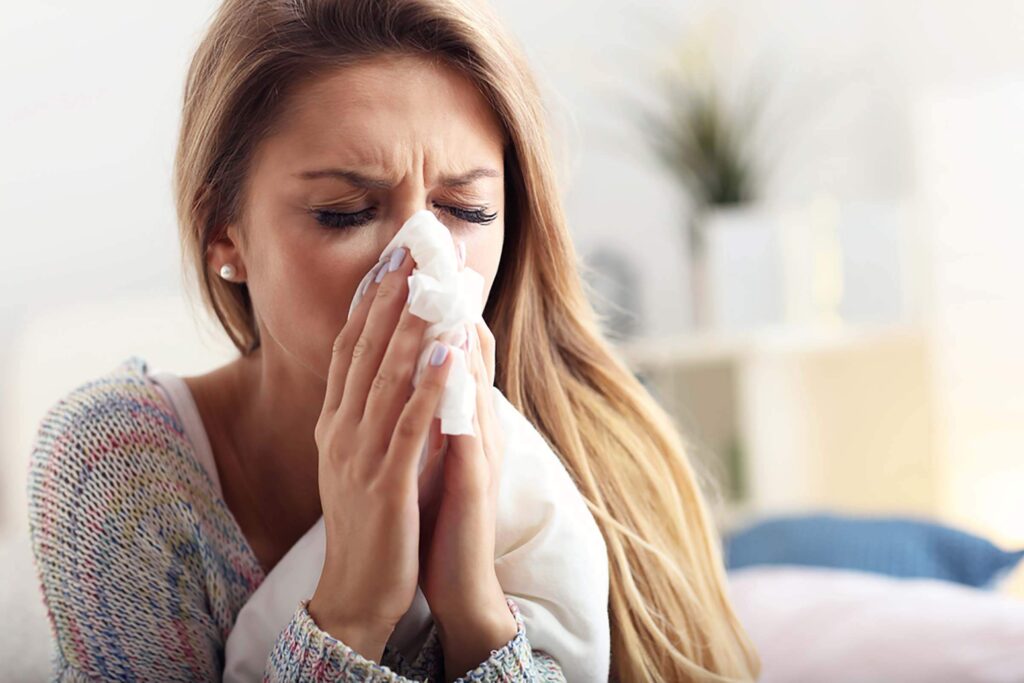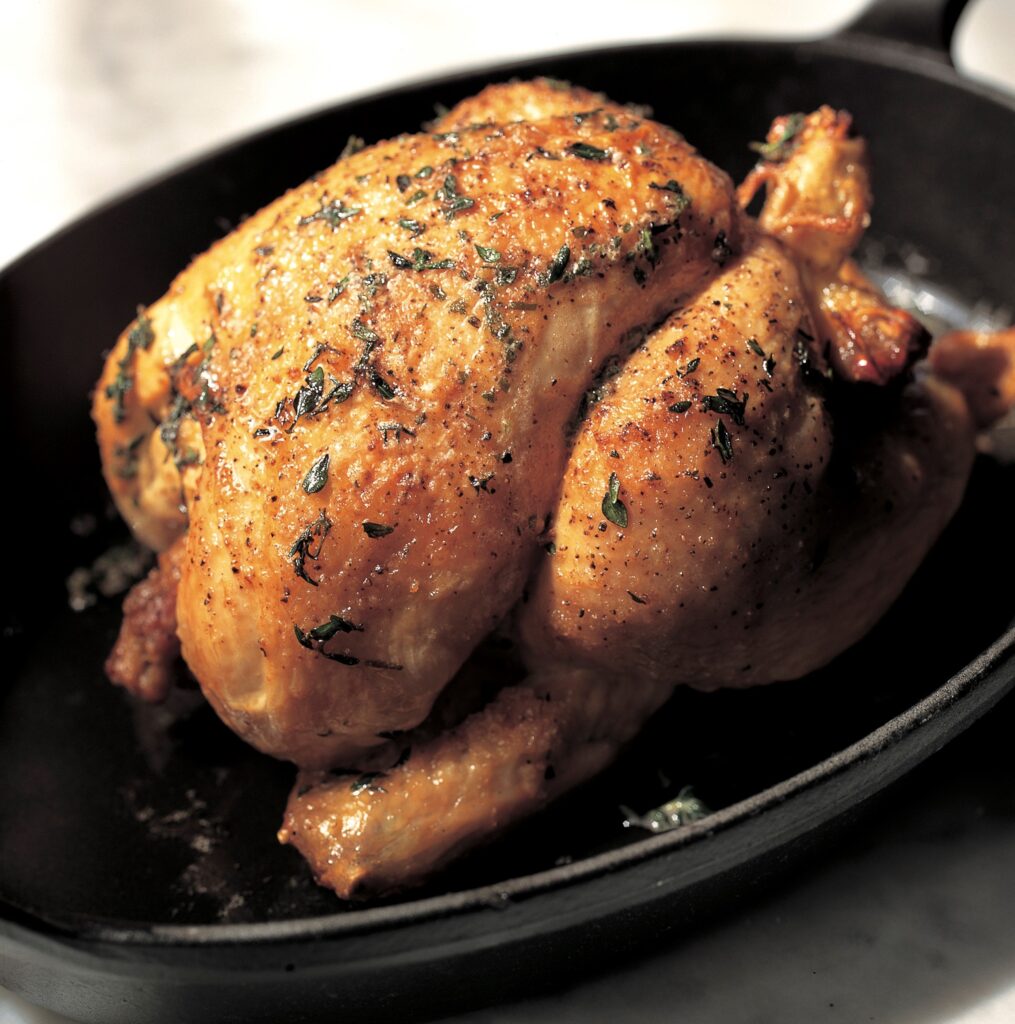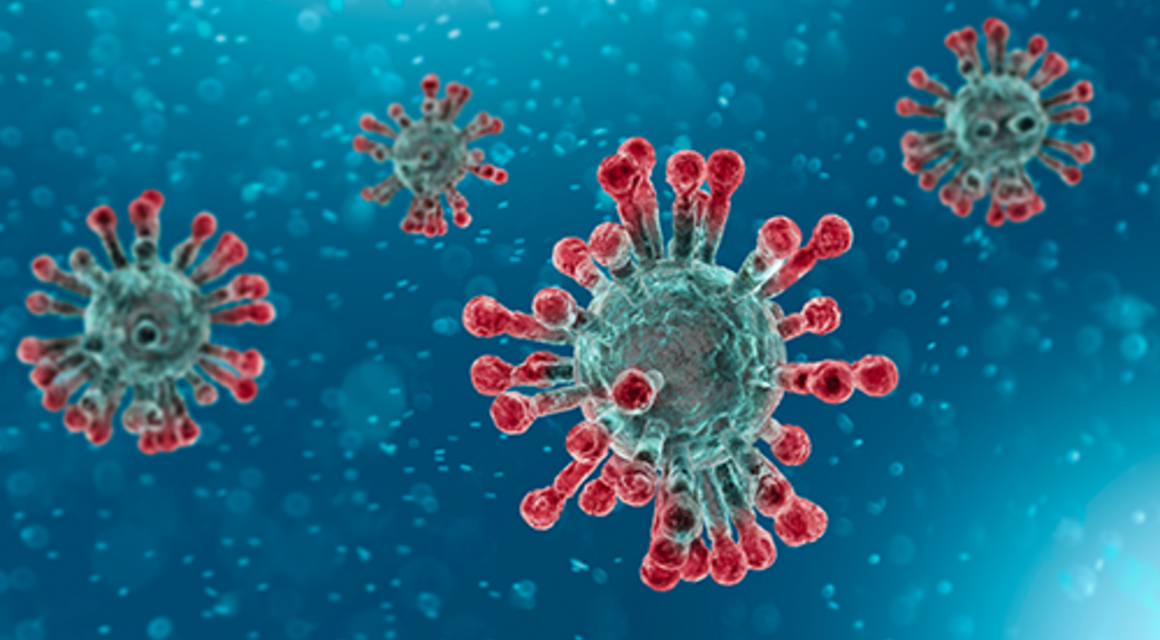We wanted to separate facts from fiction about Coronavirus and hope to provide some gentle reassurance. Read on for a simple overview on coronavirus, an understanding of where you can access updates you can trust and some simple and practical ways to support your immune health.
We live in an age where we are bombarded with information. Having fast access to such a wealth of information can sometimes be helpful, yet often not so. Along with information often comes plenty of misinformation. This leaves people unsure of what to believe, and this can soon start to manifest as worry and anxiety
What is Coronavirus?
A coronavirus is a type of virus. The name comes from the virus’s shape, which, under a microscope looks like a globule surrounded by ‘crown-like’ spikes. According to the WHO, coronaviruses are a large family of viruses that are common throughout the world and can cause a range of illnesses from the common cold to more severe respiratory conditions such as pneumonia. A new strain of coronavirus was first identified in Wuhan City, China earlier this year.
Coronavirus – Terms Unravelled
If you’ve been left feeling confused by hearing a variety of names in the mainstream media don’t worry you’re not alone, and here’s why. Firstly, viruses and the diseases they cause often have different names. And secondly, when a new strain of virus and a new associated disease have been identified, there is often an interim period before official new names are decided.In January, interim names were given; ‘2019-nCoV’ for the new virus and ‘2019-nCoV acute respiratory disease’ for the disease caused by the virus.3On 11th February, the International Committee on Taxonomy of Viruses (ICTV) announced ‘SARS-CoV-2’ as the official name of the new virus and ‘COVID-19’ was given as the official name of the disease caused by the new coronavirus strain.4To avoid confusion and for ease of reference, WHO now refers to the virus as ‘the virus responsible for COVID-19’ or the ‘COVID-19 virus’ in public communications.4You will also hear both ‘novel’ and ‘new’ used interchangeably in reference to the recently identified strain.
COVID-19 Symptoms
Symptoms of COVID-19 are typically mild and may commonly include fever, cough and shortness of breath. In more severe cases, COVID-19 can lead to serious respiratory issues such as pneumonia. Research on the known cases so far suggests that the vast majority are mild. And similar to seasonal influenza, current information suggests that those most at risk for severe complications from COVID-19 are the elderly and those with compromised immune systems or underlying health conditions.2 Unlike influenza however, current information suggests that children seem to be relatively protected. In their Journal article, Li and colleagues provided a detailed clinical and epidemiologic description of the first 425 cases reported in the city of Wuhan in China. Of particular note in their findings was that there were no cases in children younger than 15 years of age.

How is COVID-19 virus spread?
COVID-19 virus is primarily spread through respiratory droplets. Current advice suggests an increased risk if you are within 6 feet of someone who is contagious and come into contact with these droplets. It may also be possible to get the illness by touching an object or surface which has the virus on it, and then touching your mouth, nose or possibly even eyes. However, this is not currently considered to be the main way the virus is spread. Symptoms of Coronavirus may appear between 2 – 14 days after exposure. This is why the government is requesting an isolation period of 14 days for anyone who may have had recent exposure.
How does Cornavirus compare to seasonal influenza?
This is a challenging question to answer for many reasons, one of which being that it’s a new illness and there simply isn’t a long enough stretch of data from which to base this information. There have been just a few months of tracking Coronavirus compared to many years of influenza, and these numbers are evolving daily. In a recent CCDC (Chinese Center for Disease Control and Prevention) study, the researchers provided a report of a descriptive, exploratory analysis of all cases diagnosed up to 11th February 2020. They found that whilst the novel coronavirus is contagious, “it is fortunate that Coronavirus has been mild for 81% of patients and has a very low overall case fatality rate of 2.3%.”
In a later news briefing on 3rd March, the Director-General of the WHO gave updated information and said that the global case fatality rate was believed to be around 3.4%. Whilst another study published in the New England Journal of Medicine has reported a fatality rate of 1.4% among a group of 1,099 patients.8Many experts have suggested that the rate may well turn out to be lower than those currently reported by Chinese officials and the WHO. This is because during the early stages of an outbreak, if only people with severe illness seek care, many cases may go unreported, and this is especially true for coronavirus because symptoms may be mild for the majority of people.
In an editorial article published in the New England Journal of Medicine on 28th February 2020 entitled, ‘Covid-19 – Navigating the Uncharted’ the authors commented,“If one assumes that the number of asymptomatic or minimally symptomatic cases is several times as high as the number of reported cases, the case fatality rate may be considerably less than 1%. This suggests that the overall clinical consequences of Covid-19 may ultimately be more akin to those of a severe seasonal influenza (which has a case fatality rate of approximately 0.1%) or a pandemic influenza (similar to those in 1957 and 1968) rather than a disease similar to SARS or MERS, which have had case fatality rates of 9 to 10% and 36%, respectively.”

Where to access information and updates about coronavirus
The situation is evolving on a daily basis so our best advice is to keep an eye on regular updates here from the Department of Health and Social Care and Public Health England. Updated information will be published on their dedicated page every day at 2pm until further notice, and the data is accurate as of 9am on the day of publication. Their page links to all the latest travel guidance and what to do if you think you may be affected so really is your first port of call.
What you can do?
It’s important to keep abreast of updates and it’s also crucial to remember that most people appear to have mild symptoms, especially children. Fortunately, researchers have moved quickly to gather as much information as possible in a short space of time to start to build a clinical picture of the new coronavirus strain. Currently there’s no specific cure because it’s simply too early; the new strain hasn’t been around long enough for a cure to be developed, and anything claiming to be a ‘cure’ is unfounded. What we do have however is knowledge on existing viruses and an understanding of how the immune system works, and this can be used to help guide us towards therapeutic strategies which have significant potential to be of help and may help to reduce susceptibilities to serious illness. The prevention of the spread of the virus to protect yourself and others is a significant priority. This advice relates not just to the current situation but also to protecting your immune health overall.
Practical strategies to reduce risk of exposure and help prevent spread of coronavirus:
The current government advice (as of 23rd March 2020) is to stay at home even if you are well, only going outside for food, health reasons or essential work, stay 2 metres (6ft) away from other people and wash your hands as soon as you get home.

Stay at home if you are unwell in line with the current guidance
Regular handwashing – Hand washing is a really simple yet highly effective strategy that everyone can do. Hand washing is especially important before eating or touching any part of your face. General advice is to wash your hands with warm water and soap for at least 30 seconds. Hand hygiene is a commonly used method for prevention of contact infection and is recommended by the Centers for Disease Control and Prevention (CDC) and the World Health Organization (WHO). In one study, antiseptic handwashing completely inactivated Influenza A virus in infectious mucus within 30 seconds and was found to be more effective than antiseptic hand rubbing using ethanol based disinfectants.
Hand sanitiser gel – When you don’t have access to hand washing facilities use an ethanol-based hand sanitiser gel with at least 60% ethanol content.• Avoid touching any part of your face (especially eyes, nose, mouth) with unwashed hands. Start by paying attention to how often you touch your face and you’ll probably be surprised by the frequency of this. This is an especially useful tip to pass on to younger children.
Practice cough / sneeze etiquette – Cough or sneeze into a tissue and then dispose of it immediately. If you don’t have a tissue, cough into the sleeve of your inner elbow rather than your hand.

Avoid close contact with people who are unwell
Wipe as you go – Regularly wipe down frequently touched objects and surfaces in your home. You can also keep a pack of handy wet wipes in your bag to cleanse commonly used surfaces whilst out and about, such as table trays on planes and train journeys.
Saline nasal irrigation – In a 2015 Cochrane Systematic Review on saline nasal irrigation for acute respiratory tract infections (URTIs), saline was found to be “probably effective for reducing the severity of some symptoms associated with URTIs”.15 We don’t know if saline nasal irrigation can help against COVID-19 but it may be worth considering for its potential to reduce symptom severity in URTIs or as a possible preventative strategy after potential exposure (such as a plane journey).
Key nutrients and ingredients to support immune health:
Vitamin C
Always at the top of the list for immune support. Vitamin C is a powerful antioxidant, has anti-inflammatory activity and supports the body’s ability to fight infection. Vitamin C has been shown to shorten the duration of the common cold, and even prevent it in some conditions, for example when people are exposed to brief periods of intense physical exercise.16In a 2017 study, intravenous vitamin C was successfully added to a protocol to significantly reduce mortality in patients with severe sepsis and septic shock.
In fact, research is now underway to study the clinical efficacy and safety of vitamin C for the clinical management of severe acute respiratory infection (SARI) (the severe pneumonia which has been caused by the new coronavirus strain) through randomised controlled trials during this current outbreak.
Vitamin C also helps to support a healthy stress response and so may have added benefit when worries are heightened.
Foods rich in vitamin C include citrus fruits, kiwi fruit, berries and bell peppers.

Vitamin D
Vitamin D has been found to play a significant role in the function of the immune system, in both innate and adaptive immunity. In a 2017 review on vitamin D published in Clinical Therapeutics, vitamin D is described as a ‘pro-survival molecule’.The authors commented, “vitamin D not only helps the immune system to be dampened during an excessive or chronic reaction (anti-inflammatory potential) but also to rapidly reach its completion or exhaustion, helping innate cells to kill bacteria or viruses. In this sense, vitamin D maintains its pivotal role as a pro-survival molecule.”
Many immune cells express vitamin D receptors and vitamin D also enhances the antimicrobial properties of immune cells. In addition, our bodies naturally produce substances called antimicrobial peptides (AMPs), which act as the first line of defence against foreign invaders. This first line of defence is so effective that AMPs are often referred to as ‘natural antibiotics’. There are two main types of AMPs – cathelicidin and defensin, and research has shown that vitamin D specifically upregulates cathelicidin, thus supporting a robust immune response. A 2018 study found vitamin D status to be positively associated with plasma cathelicidin levels.
A large 2017 study published in the British Medical Journal found vitamin D to be effective for preventing colds and flu. Maintaining healthy vitamin D levels is important for supporting the body’s ability to fight infection. Unlike most essential nutrients however, you can’t rely on food to keep your levels optimal. The main source of vitamin D isn’t food, but sunshine; your bare skin produces vitamin D when it comes into contact with the sun’s rays, so risk of deficiency is higher during the winter months and current estimates suggest that many people are low. It’s a good idea to get your levels checked at least once a year, and to add a daily maintenance supplement through the winter months.
Quercetin
Quercetin is a naturally occurring flavonoid found in plant foods. Flavonoids have been found to have significant therapeutic potential. Their unique structural properties mean they have the potential to interact with different cell types and thus may be beneficial in the protection against disease. Several studies have found quercetin to be a useful anti-inflammatory support and to improve survival and decrease cell damage in a mouse model of sepsis.
Elderberry extract
Extracts of elderberry have received much attention recently for their potential natural anti-viral activity. Studies have found elderberry extracts to be beneficial for reducing symptoms of influenza and the common cold. Elderberry is a rich source of powerful compounds called anthocyanins and it is considered that the possible anti-viral activity of elderberry may in part be mediated by ferulic acid, a compound which has been identified in plasma following intake of anthocyanins.
N-Acetyl Cysteine
N-Acetyl Cysteine is perhaps a less obvious choice but may be a useful addition to immune support at this time of year, and particularly among the elderly. N-Acetyl Cysteine is used in supplement form to supply the body with cysteine, an amino acid needed to support the body’s production of glutathione – a master antioxidant.In a 6-month placebo-controlled clinical study, 262 mainly elderly subjects received either 600mg NAC twice daily or placebo. Those receiving NAC experienced significantly fewer influenza-like episodes and days in bed. The researchers also noted that even though the rate of viral infection was the same in both groups, only 25% of the group taking NAC developed symptoms compared to 79% in the placebo group. NAC may be particularly useful in the elderly due to the fact that plasma cysteine and glutathione levels tend to decline with increasing age.
Selenium
Selenium is an essential co-factor nutrient for the production of glutathione peroxidase and has significant antioxidant properties. Selenium deficiency seems to speed up the rate that viruses can mutate, and influenza has been found to be more pathogenic in selenium deficient mice. For general immune health, it certainly seems prudent to ensure that selenium levels are optimal. Brazil nuts, oats, sunflower seeds, fish, turkey and chicken typically contain good levels of this important mineral.

Zinc
A severe deficiency of zinc is known to suppress immune function, and even mild to moderate deficiency can have a negative impact on the immune system’s ability to deal with infection. Zinc supports the function and proliferation of various immune cells. It’s notable that in the 2014 AREDS trial a significant 27% reduction in total mortality was observed in elderly subjects who received high dose zinc. Multiple studies have shown low levels of zinc are associated with increased risk of infections such as pneumonia in elderly adults and children in developing countries.
Ensuring optimal levels of zinc, particularly in children and the elderly would therefore seem sensible. The body doesn’t have much ability to store zinc so it’s crucial that your daily diet supplies plenty of this immune boosting mineral. You’ll find high levels of zinc in meat, chickpeas & lentils, pumpkin and sesame seeds. You can also take extra zinc in supplement form to keep your levels topped up and gently support your immune function. If you regularly take zinc in supplement form however (such as in a daily multi) it is important to balance this with copper, as excess zinc can cause copper deficiency and vice versa.
Beta glucans
Beta glucans are naturally occurring polysaccharides found in bacteria and fungi, used to make cell walls and store energy. What’s particularly interesting about beta glucans is their incredible, natural ability to modulate immune function. Wellmune is a commercially available beta glucan extracted from the cell wall of a proprietary strain of yeast. A 2018 randomised controlled trial studied the effects of Wellmune yeast beta glucan on immune function and found it reduced cold/flu symptoms following intense exercise. These effects are significant since intense exercise is known to be a risk factor for upper respiratory tract infections. This latest research confirms findings from two previous studies which demonstrated immune modulating benefits of Wellmune in capsule form.
Vitamin A
Several immune system functions rely on vitamin A and deficiency is known to impair the innate immune system (the non-specific ‘first line of defence’ part of the immune system). Vitamin A also regulates some genes involved in immune function. Vitamin A is found in the diet in two forms: beta-carotene (found in red, yellow and orange plant foods) and retinol, or ‘active vitamin A’ (found in high fat animal foods such as eggs, butter, liver and full fat dairy products). Beta-carotene must first be converted in the body before it can be used, hence why retinol is often referred to as ‘active vitamin A’. For targeted immune support, vitamin A is best supplemented as a mix of both retinol and beta-carotene. For ongoing support in a daily multi, it is best to stick to beta-carotene as your preferred source and include good sources of retinol in your diet.
Saccharomyces boulardii
The gut microflora have important roles to play in their interactions with the immune system, and supporting a thriving, diverse gut microbiome is an important part of ongoing immune health. Saccharomyces boulardii is a safe, non-pathogenic type of yeast which may help to support the immune system. In a 2007 study carried out on children with acute gastroenteritis the administration of S. boulardii (250 mg twice daily for 7 days) resulted in significant increases in CD8 lymphocytes, serum immunoglobulin A and decreases in C-reactive protein levels, suggesting that S. boulardiitreatment enhances the immune response.
And finally, it’s important to remember that a healthy immune system relies on a range of additionally supportive diet and lifestyle factors too. Pay particular attention to:
✔ Consuming plenty of brightly coloured fruits and vegetables
✔ Regularly getting good quality sleep
✔ Keeping stress levels in check and making time for daily relaxation
✔ Reducing intake of refined sugar and alcohol
If you are at all concerned about coronavirus or suspect you may be suffering from symptoms, it’s vital you phone your GP or call 111.Remember you can access daily updates from Public Health England and the UK Department of Health and Social Care here.
www.joannewillcox.com
Instagram: joannewillcoxskin | the_skindr

Founder of Joanne willcox clinics of Cheshire is a well known colonic hydrotherapist .
She has successfully runs 3 detox clinics in Chester and Liverpool and has done for over 20 years.
For over 16 years Joanne has ran a monthly detox retreat every month at crabwall manor hotel and spa… to help recharge and restore both the mind and the gut.
Joanne is a master NLP practioner and member of ARCH and British naturopathic association,, also qualified in Chinese medicine.
Joanne encourages her clients to practice her holistic approach at home.
Her healing juices and balancing skin care range do just that.
Joanne’s office is always there for support and advice, she tells us, even after treatments.















